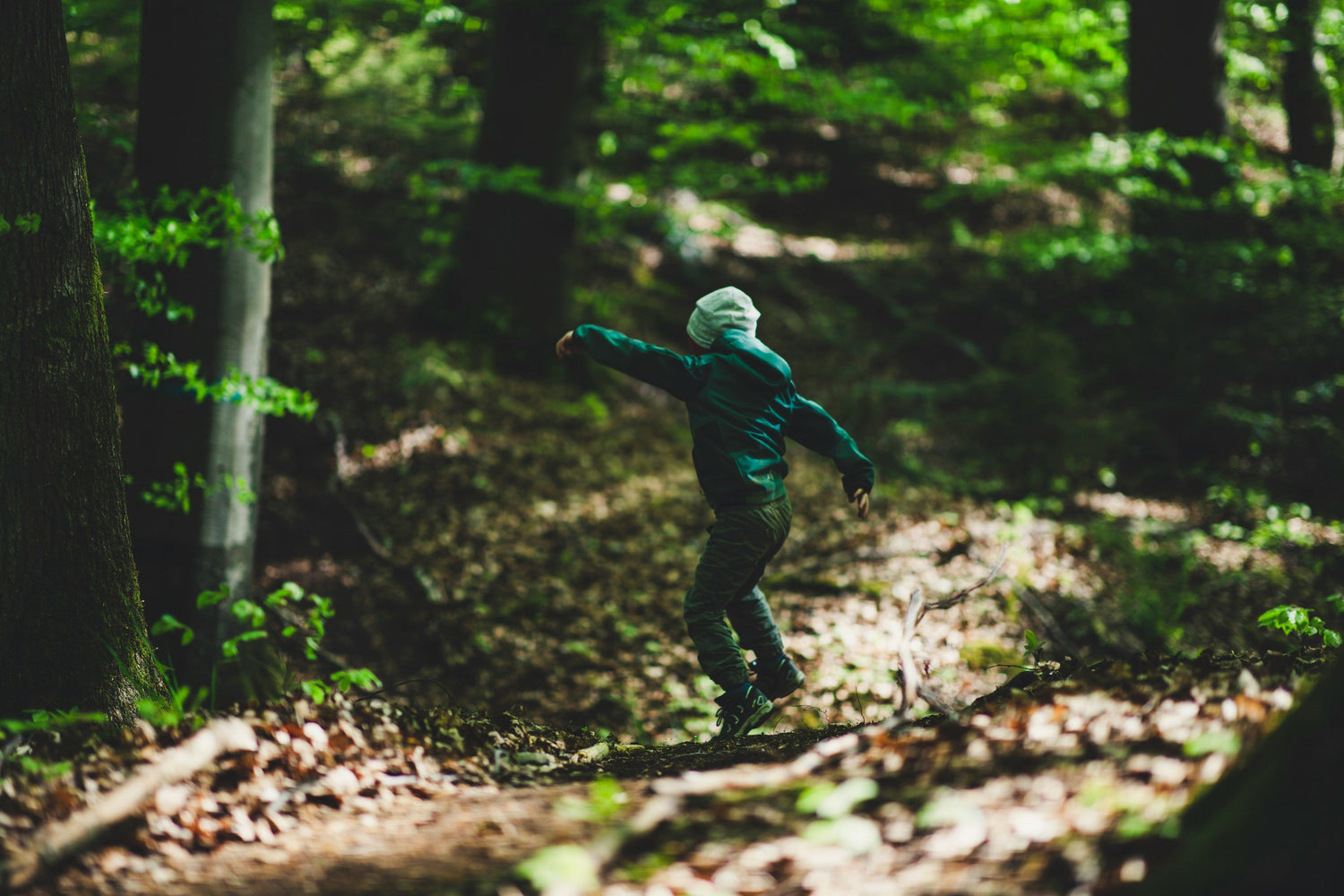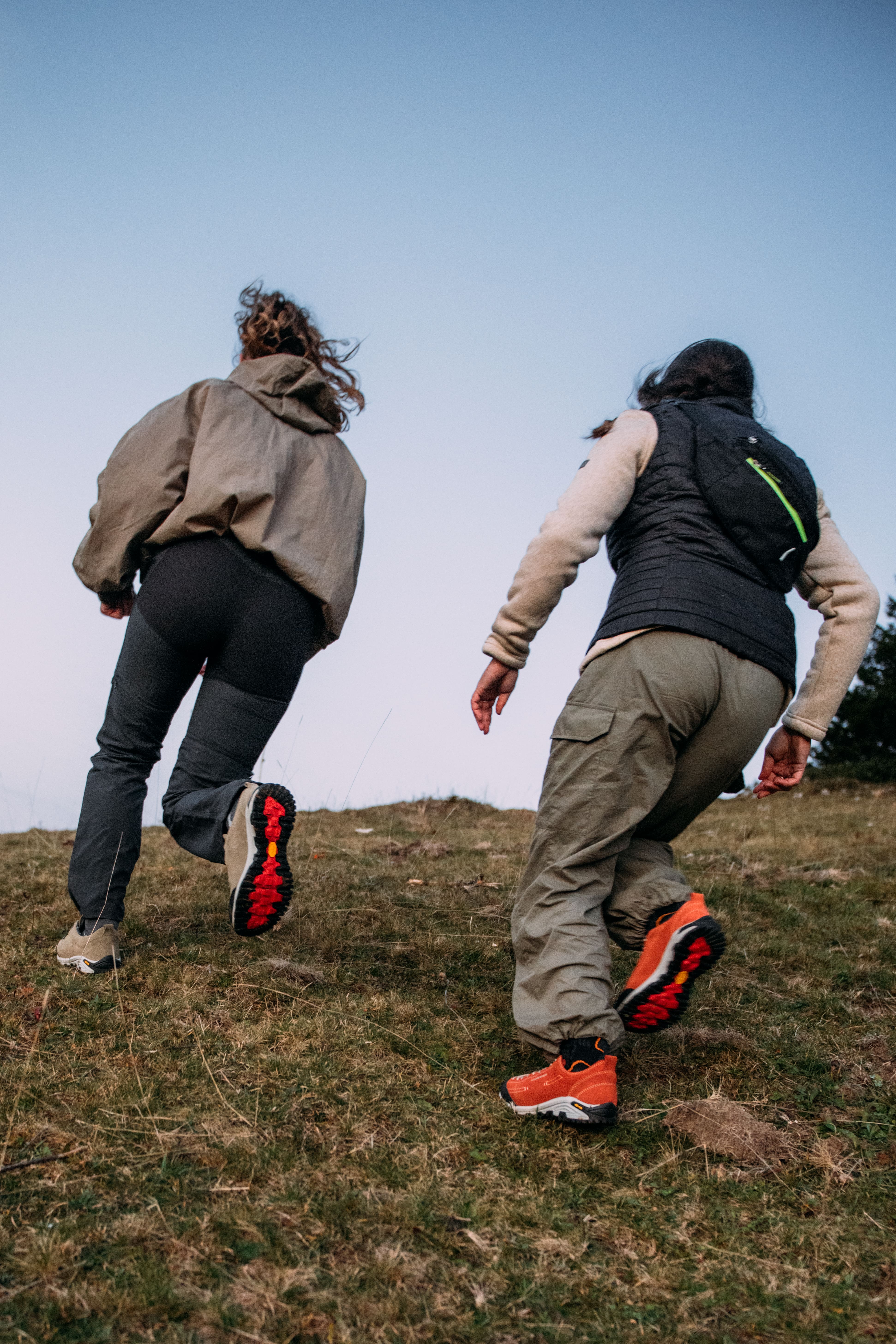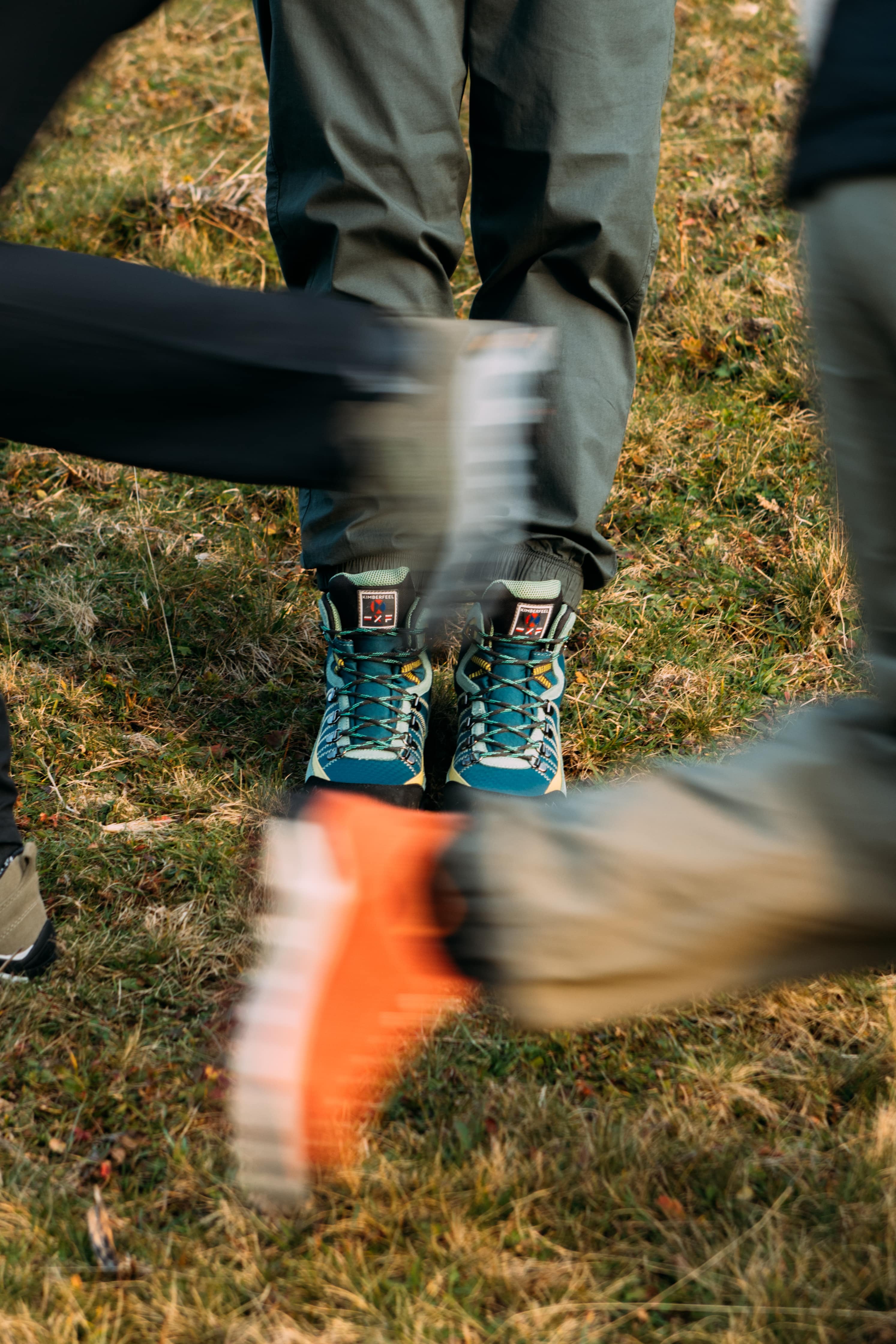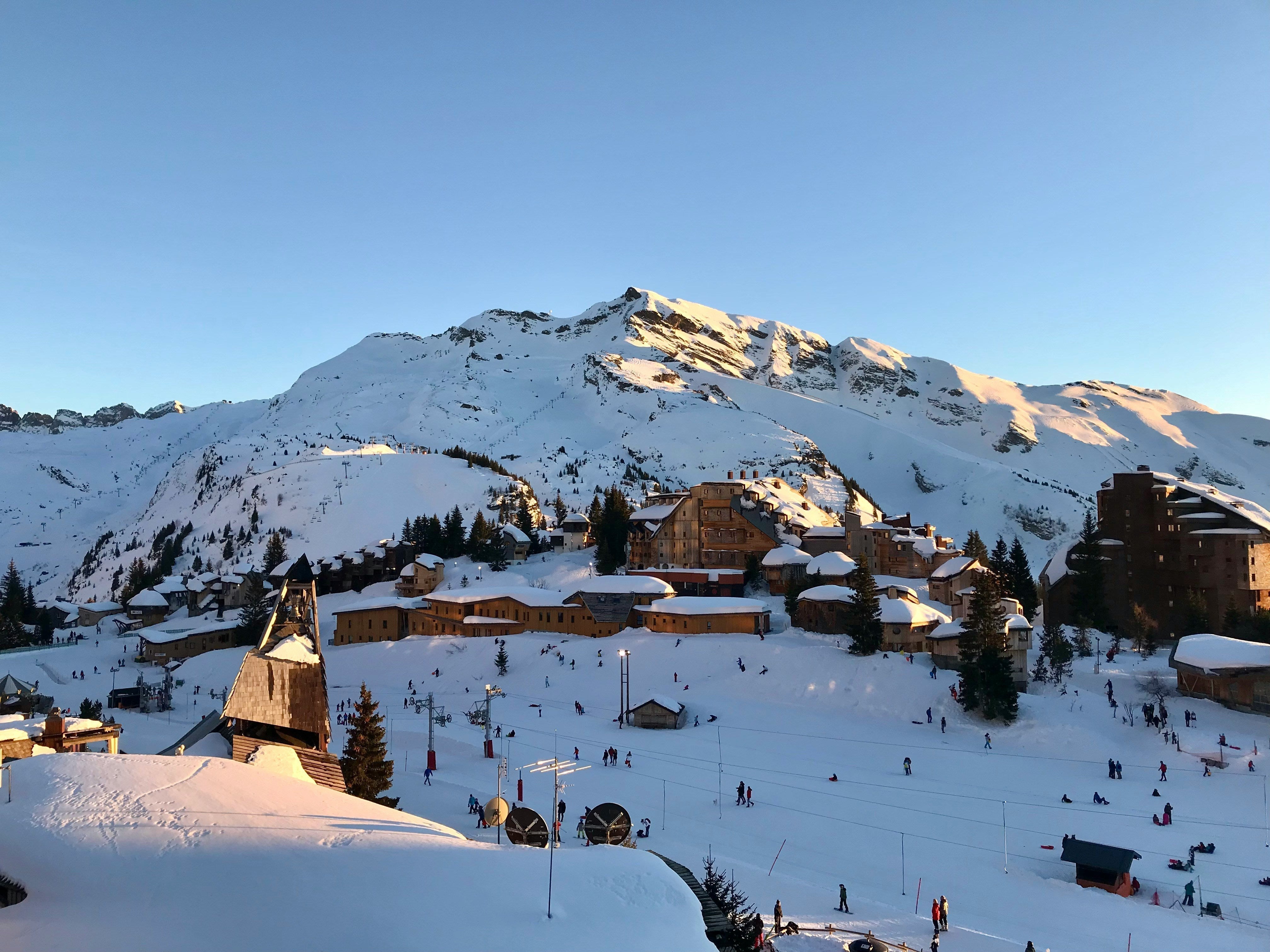When hiking, kids don't pretend: if their shoes are bothering them, you'll know it quickly. And there's no need to wait for the picnic break. A scrape, a slippery sole, or a pair that's too stiff, and it's time to stop halfway through.
Comfort is a non-negotiable commodity for them. They need a shoe that fits their feet well, that doesn't get hot after ten minutes, and that lets them move as they like: quickly, often, in all directions.
When it works, it's simple: they walk, they run, they climb. They forget they have something on their feet. And you move forward without having to carry, negotiate, or cut corners.
They don't yet have the reflex to "go with it." If things get stuck, they stop. So it's best to choose wisely from the start.
In this article, we'll review the best tips for choosing the right pair of shoes, the pitfalls to avoid when choosing a shoe size, and specific models based on the type of terrain. All of this will make outings easier (for everyone).
The 4 essential criteria to check
When choosing a pair for yourself, you have your benchmarks. For kids, it's a little different: they can't always say what bothers them. So it's best to make sure the shoe ticks the right boxes from the start. Here's what to really look for.
1. Ankle support
Children run, jump, and change direction without warning. And they often do so over rocks or roots. A shoe that provides good ankle support limits the risk of ankle sprains, especially on uneven terrain.
A mid- or high-cut upper provides more stability. This is reassuring for them, and especially for you.
2. A grippy sole
Slipping on a wet rock or dirt slope can happen quickly. The sole must be well-lugged, flexible enough at the front to follow the movement of the foot, and firm enough under the heel to absorb shock.
Also check the grip: the more grippy it is, the less you will have to stretch your arms to recover from a skid.
3. Waterproofness (and breathability)
A puddle, wet grass, or a thunderstorm in the middle of a hike... it's easy to get wet. If your shoes don't protect you from the water, the hike will end with soaked feet.
But it's not enough for it to be waterproof. It also needs to be at least a little breathable, otherwise your feet will get scorched inside. So we aim for both: protection and ventilation.
4. Weight
Children don't need shoes that are too heavy. The lighter they are, the more freely they can move. But you still need a minimum of strength and durability.
Choosing the right shoe size: not so simple
A poorly fitting shoe, even one with a good sole and good waterproofing, remains uncomfortable. Here are some simple guidelines to avoid unpleasant surprises.
To avoid
➜ Going up a size “to make it last” is tempting, but dangerous. A floating foot is a foot that rubs. And more friction = more blisters.
➜Rely on their everyday shoe size : The difference between a city sneaker and a hiking shoe can vary. Materials, interior volume, and sock type all count.
➜ Try without walking : as long as they are static, you will not see if the foot slides on the descent or hits the front.
➜ Tell yourself it'll "work out" : Children don't want to wait for their shoes to become comfortable. If they're uncomfortable from the start, they won't give you a second chance.
To do
➜ Try them on with the socks you're meant for hiking : it makes all the difference. A thin or thick sock will completely distort the fit.
➜ Leave a little space at the front : about 1 cm, to prevent your toes from hitting each other when going downhill. No more, or your foot will move too much.
➜ Test the heel support : it should not come off when they walk. Otherwise, friction at the back → blister → nagging.
➜ Get them moving : going up a slope, going down, jumping, running. If they tell you that "it hits" or "it rubs" at that moment, take it seriously.
➜ Try it at the end of the day : feet swell a little after a day of activity, like hiking. This gives a more reliable measurement than in the morning.
Once you find the right size, your children will never have to think about their feet again... and that's exactly what we're looking for.
Which models for which uses?
Choosing a good pair also means thinking about actual use. You don't need the same level of support, grip, or protection for a well-tracked forest outing as you do for a more challenging mountain hike. We'll help you find a pair that's suited to your child's terrain and pace.
For easy walks
On a dry trail, with little elevation gain, or for a first experience with the family, the objective is simple: comfort and lightness. The shoe must follow without hindering their movements.
Our favorite model: GOKART

Mid-cut upper, quick lacing, lugged sole... the GOKART has everything you need to go on a series of rides without overloading your feet.
It offers good support without rigidity, and remains light enough not to slow down even the most dynamic children.
Ideal for:
✔ short half-day hikes
✔ outings on dry or less technical terrain
✔ children who are just starting out or who alternate between walking and running
For more technical hikes
When the terrain becomes more demanding (uneven terrain, rocks, wet patches, etc.), the shoe must keep up. Here, you're looking for support, protection, and serious traction. The idea is to prevent slipping or the foot from tiring too quickly.
Our favorite model: VINSON

With its high upper, waterproof membrane and well-lugged sole, the VINSON is designed for children who like to scramble, overcome obstacles and walk for long periods.
It protects the ankle well, keeps the feet dry, and remains comfortable even on technical terrain.
Ideal for:
✔ hikes in the mountains or in the rainforest
✔ day trips, with elevation gain
✔ children who walk regularly and at a good pace
If they forget they're wearing them, they've won.
A pair that fits the foot well, doesn't rub, and keeps pace with them: that's what makes all the difference between a hike you endure and a successful outing. Kids don't cheat when it comes to comfort. If it fits, they move forward. If it doesn't, they stop.
So we might as well give them the right foundations to enjoy walking.
To find the pair that will really suit them, take a look at our selection of children's shoes .
Models designed to accompany them on all their adventures.








